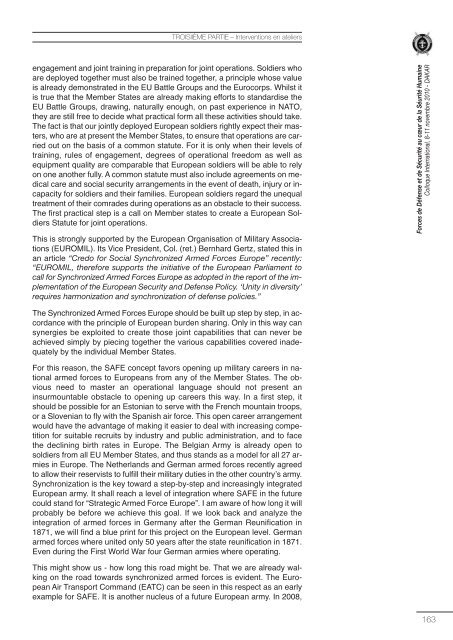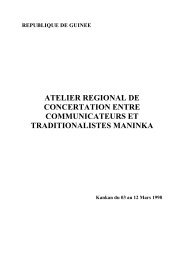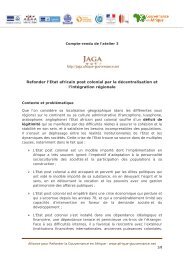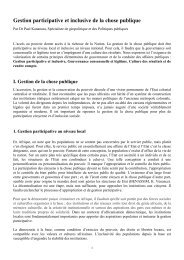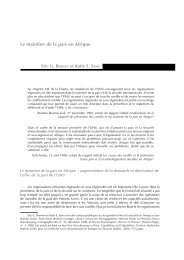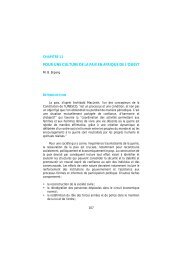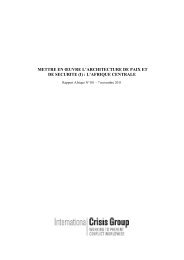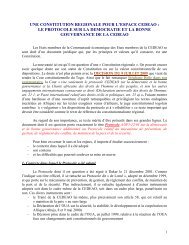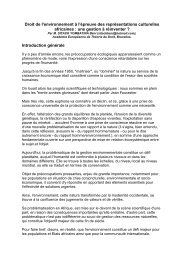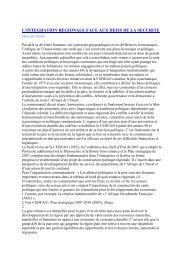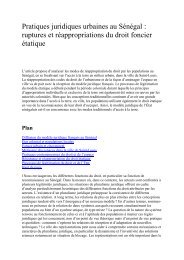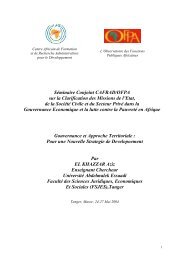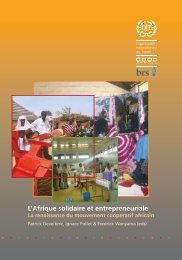Compendium - Fondation Charles Léopold Mayer pour le progrès ...
Compendium - Fondation Charles Léopold Mayer pour le progrès ...
Compendium - Fondation Charles Léopold Mayer pour le progrès ...
Create successful ePaper yourself
Turn your PDF publications into a flip-book with our unique Google optimized e-Paper software.
TROISIIÈME PARTIE – Interventions en ateliersengagement and joint training in preparation for joint operations. Soldiers whoare deployed together must also be trained together, a princip<strong>le</strong> whose valueis already demonstrated in the EU Batt<strong>le</strong> Groups and the Eurocorps. Whilst itis true that the Member States are already making efforts to standardise theEU Batt<strong>le</strong> Groups, drawing, naturally enough, on past experience in NATO,they are still free to decide what practical form all these activities should take.The fact is that our jointly deployed European soldiers rightly expect their masters,who are at present the Member States, to ensure that operations are carriedout on the basis of a common statute. For it is only when their <strong>le</strong>vels oftraining, ru<strong>le</strong>s of engagement, degrees of operational freedom as well asequipment quality are comparab<strong>le</strong> that European soldiers will be ab<strong>le</strong> to relyon one another fully. A common statute must also include agreements on medicalcare and social security arrangements in the event of death, injury or incapacityfor soldiers and their families. European soldiers regard the unequaltreatment of their comrades during operations as an obstac<strong>le</strong> to their success.The first practical step is a call on Member states to create a European SoldiersStatute for joint operations.This is strongly supported by the European Organisation of Military Associations(EUROMIL). Its Vice President, Col. (ret.) Bernhard Gertz, stated this inan artic<strong>le</strong> “Credo for Social Synchronized Armed Forces Europe” recently:“EUROMIL, therefore supports the initiative of the European Parliament tocall for Synchronized Armed Forces Europe as adopted in the report of the imp<strong>le</strong>mentationof the European Security and Defense Policy. ‘Unity in diversity’requires harmonization and synchronization of defense policies.”Forces de Défense et de Sécurité au cœur de la Séurité HumaineColloque International, 8-11 novembre 2010 - DAKARThe Synchronized Armed Forces Europe should be built up step by step, in accordancewith the princip<strong>le</strong> of European burden sharing. Only in this way cansynergies be exploited to create those joint capabilities that can never beachieved simply by piecing together the various capabilities covered inadequatelyby the individual Member States.For this reason, the SAFE concept favors opening up military careers in nationalarmed forces to Europeans from any of the Member States. The obviousneed to master an operational language should not present aninsurmountab<strong>le</strong> obstac<strong>le</strong> to opening up careers this way. In a first step, itshould be possib<strong>le</strong> for an Estonian to serve with the French mountain troops,or a Slovenian to fly with the Spanish air force. This open career arrangementwould have the advantage of making it easier to deal with increasing competitionfor suitab<strong>le</strong> recruits by industry and public administration, and to facethe declining birth rates in Europe. The Belgian Army is already open tosoldiers from all EU Member States, and thus stands as a model for all 27 armiesin Europe. The Netherlands and German armed forces recently agreedto allow their reservists to fulfill their military duties in the other countryʼs army.Synchronization is the key toward a step-by-step and increasingly integratedEuropean army. It shall reach a <strong>le</strong>vel of integration where SAFE in the futurecould stand for “Strategic Armed Force Europe”. I am aware of how long it willprobably be before we achieve this goal. If we look back and analyze theintegration of armed forces in Germany after the German Reunification in1871, we will find a blue print for this project on the European <strong>le</strong>vel. Germanarmed forces where united only 50 years after the state reunification in 1871.Even during the First World War four German armies where operating.This might show us - how long this road might be. That we are already walkingon the road towards synchronized armed forces is evident. The EuropeanAir Transport Command (EATC) can be seen in this respect as an earlyexamp<strong>le</strong> for SAFE. It is another nuc<strong>le</strong>us of a future European army. In 2008,163


